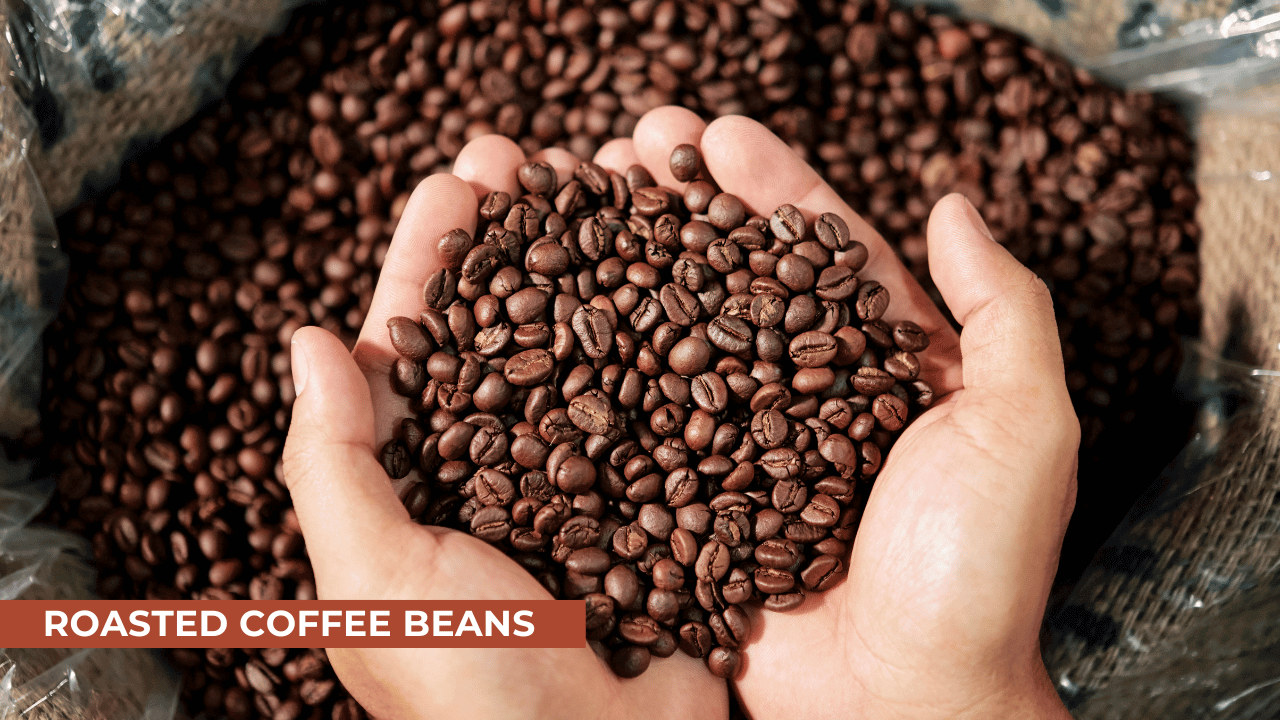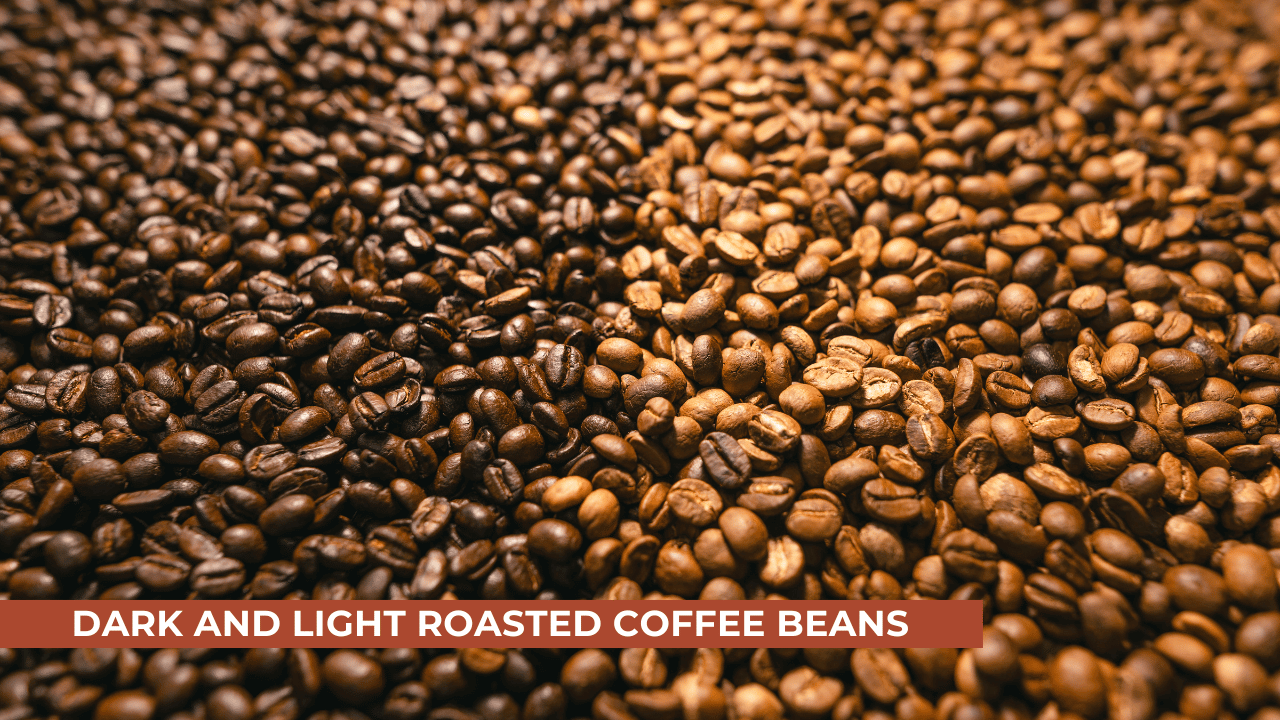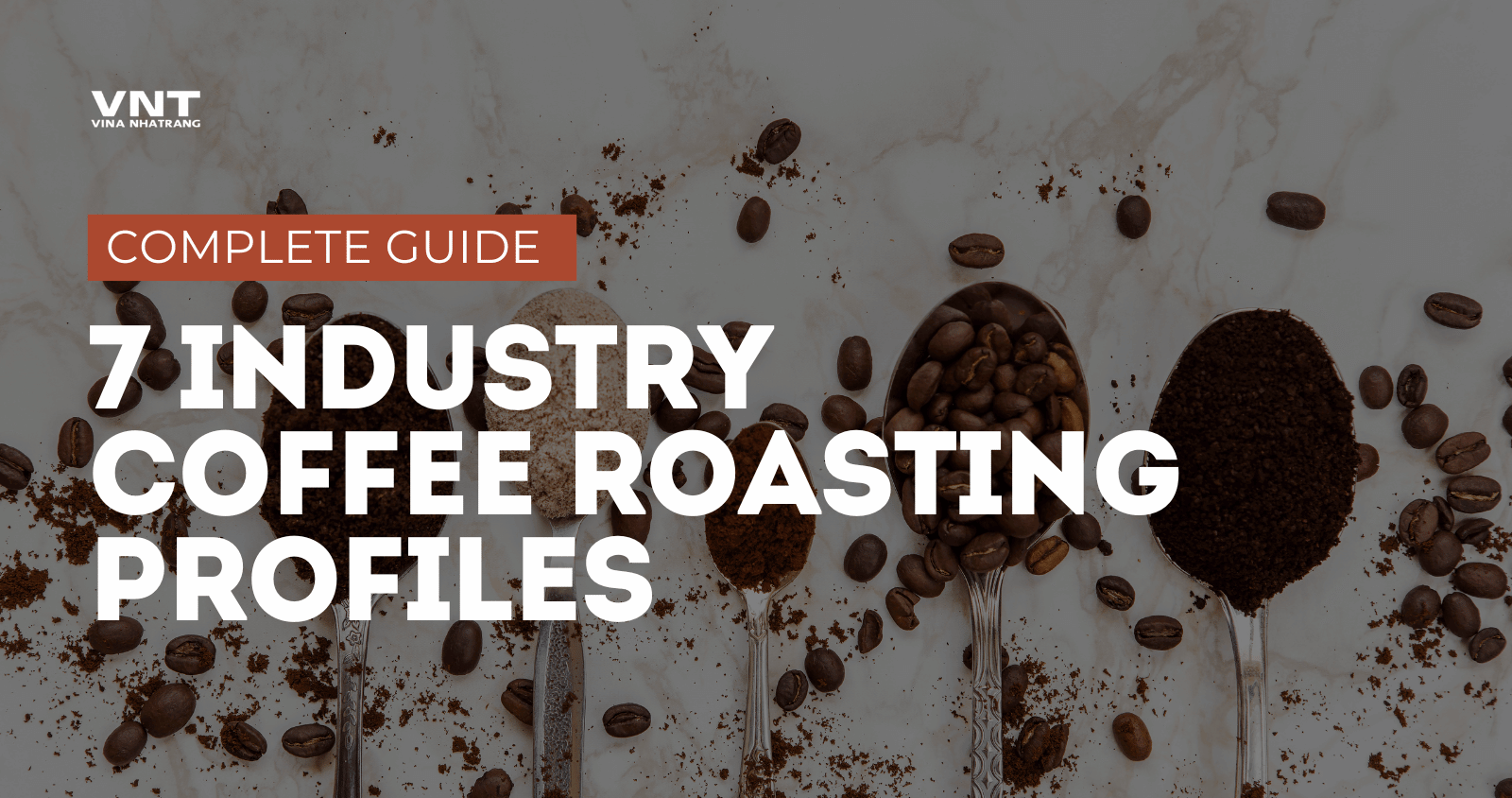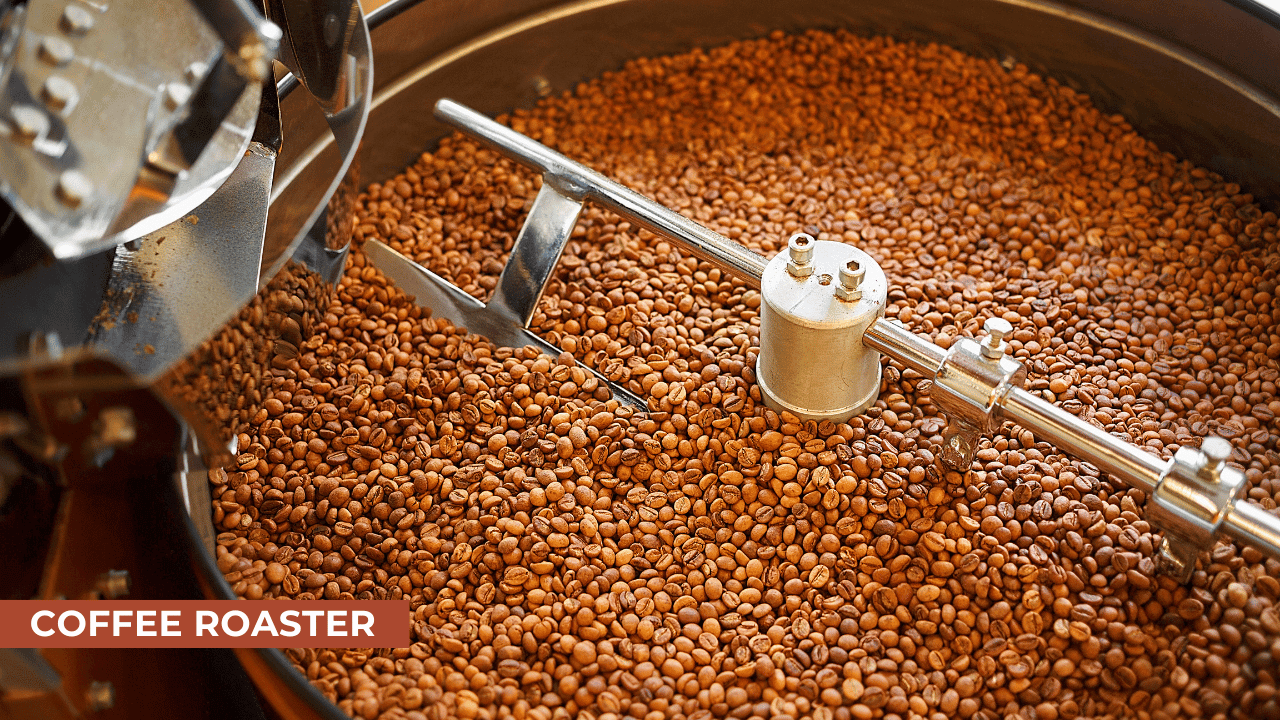The art and science of coffee roasting stand at the intersection of precision, passion, and profitability in the specialty coffee industry. As artisanal coffee consumption continues to surge, with the specialty coffee market projected to reach $83.6 billion by 2025, mastering roasting profiles has become more crucial than ever for coffee professionals and businesses alike. This comprehensive guide will explore the intricate world of coffee roasting profiles, from fundamental concepts to advanced techniques.
Discover Our Recommended Coffee Roasters for 2024 HERE
The Foundation of Exceptional Coffee: Understanding Roasting Profiles
What is a Roasting Profile?
A roasting profile is the precise time-temperature relationship that defines how heat is applied to green coffee beans throughout the roasting process. Think of it as your coffee’s unique fingerprint – a detailed roadmap that guides beans from their raw state to peak flavor development. Each profile creates a distinct flavor signature, affecting everything from acidity and sweetness to body and aromatics.
The Science Behind the Magic
Temperature manipulation during roasting triggers complex chemical reactions:
- Maillard Reaction: Occurs between 300-400°F, creating hundreds of flavor compounds
- First Crack: Typically happens around 385-405°F, marking a crucial development stage
- Second Crack: Usually begins at 435-455°F, indicating darker roast development

Seven Essential Industry Roasting Profiles
Light Roast Profile (City Roast)
Technical Specifications
- Temperature Range: 356-401°F
- Total Duration: 8-10 minutes
- Charge Temperature: 350-365°F
- Development Time Ratio: 12-15%
- Rate of Rise Targets:
- Drying Phase: 20-25°F/min
- Maillard Phase: 12-15°F/min
- Development Phase: 5-8°F/min
Detailed Process
- Initial Phase (0-4 minutes)
- Start with lower charge temperature
- Gentle heat application
- Allow for longer drying phase
- Monitor bean color change carefully
- Middle Phase (4-7 minutes)
- Gradual reduction in RoR
- Focus on even heat distribution
- Watch for yellowing completion
- Maintain steady temperature climb
- Development Phase (7-10 minutes)
- Quick development after first crack
- Minimal time post first crack
- Drop before second crack begins
- Rapid cooling essential
Flavor Development
- Primary Notes:
- Bright citrus acidity
- Floral aromatics
- Tea-like body
- Fruit-forward characteristics
- Chemical Changes:
- Limited caramelization
- Preserved organic acids
- Minimal oil development
- Maximum caffeine retention
Best Applications
- Optimal Beans:
- High-altitude grown
- Dense beans
- African origins
- Washed process
- Brewing Methods:
- Pour-over
- Filter coffee
- Cold brew
- AeroPress
Medium Roast Profile (Full City)
Technical Specifications
- Temperature Range: 410-428°F
- Total Duration: 10-12 minutes
- Charge Temperature: 365-380°F
- Development Time Ratio: 15-18%
- Rate of Rise Targets:
- Drying Phase: 18-22°F/min
- Maillard Phase: 10-15°F/min
- Development Phase: 6-10°F/min
Detailed Process
- Initial Phase (0-5 minutes)
- Moderate charge temperature
- Steady heat application
- Controlled moisture release
- Even color development
- Middle Phase (5-9 minutes)
- Extended Maillard reactions
- Smooth RoR curve
- Careful heat management
- Color progression monitoring
- Development Phase (9-12 minutes)
- Moderate post-crack development
- Balanced sugar browning
- Controlled caramelization
- Precise drop timing
Flavor Development
- Primary Notes:
- Balanced sweetness
- Chocolate undertones
- Caramel complexity
- Medium body
- Chemical Changes:
- Moderate caramelization
- Balanced acid degradation
- Initial oil migration
- Optimal sugar browning
Best Applications
- Optimal Beans:
- Medium altitude
- Brazilian Santos
- Colombian Supremo
- Central American
- Brewing Methods:
- Espresso
- French Press
- Drip coffee
- Moka pot
Dark Roast Profile (French/Italian)
Technical Specifications
- Temperature Range: 437-464°F
- Total Duration: 12-15 minutes
- Charge Temperature: 380-395°F
- Development Time Ratio: 20-25%
- Rate of Rise Targets:
- Drying Phase: 15-20°F/min
- Maillard Phase: 8-12°F/min
- Development Phase: 4-8°F/min
Detailed Process
- Initial Phase (0-6 minutes)
- Higher charge temperature
- Aggressive heat application
- Rapid moisture removal
- Quick color progression
- Middle Phase (6-11 minutes)
- Extended sugar caramelization
- Controlled heat reduction
- Second crack preparation
- Oil development monitoring
- Development Phase (11-15 minutes)
- Extended post-crack development
- Second crack management
- Oil migration control
- Smoke management
Flavor Development
- Primary Notes:
- Bold intensity
- Smoky characteristics
- Bittersweet chocolate
- Full body
- Chemical Changes:
- Maximum caramelization
- Significant oil development
- Acid degradation
- Complex sugar breakdown
Best Applications
- Optimal Beans:
- Indonesian origins
- Robusta blends
- Lower altitude grown
- Natural process
- Brewing Methods:
- Espresso
- Turkish coffee
- Traditional Italian
- Commercial brewing

Nordic-Style Light Profile
Technical Specifications
- Temperature Range: 350-390°F
- Total Duration: 8-9 minutes
- Charge Temperature: 340-355°F
- Development Time Ratio: 10-13%
- Rate of Rise Targets:
- Drying Phase: 22-25°F/min
- Maillard Phase: 15-18°F/min
- Development Phase: 4-6°F/min
Detailed Process
- Initial Phase (0-3.5 minutes)
- Low charge temperature
- Quick initial heat
- Extended drying phase
- Careful moisture control
- Middle Phase (3.5-7 minutes)
- Minimal Maillard development
- High RoR maintenance
- Color monitoring
- Heat adjustment precision
- Development Phase (7-9 minutes)
- Very short post-crack
- Quick drop after first crack
- Rapid cooling
- Light color retention
Flavor Development
- Primary Notes:
- Intense brightness
- Floral complexity
- Tea-like delicacy
- Clean finish
- Chemical Changes:
- Minimal caramelization
- Maximum acid retention
- No oil development
- Limited Maillard products
Best Applications
- Optimal Beans:
- Ethiopian Yirgacheffe
- Kenyan AA
- Panama Gesha
- High-grown Guatemalan
- Brewing Methods:
- Light filter coffee
- Pour-over
- Batch brew
- Cold drip
Omni Roast Profile
Technical Specifications
- Temperature Range: 395-420°F
- Total Duration: 10-13 minutes
- Charge Temperature: 360-375°F
- Development Time Ratio: 16-20%
- Rate of Rise Targets:
- Drying Phase: 18-22°F/min
- Maillard Phase: 10-14°F/min
- Development Phase: 6-9°F/min
Detailed Process
- Initial Phase (0-5 minutes)
- Moderate charge temperature
- Balanced heat application
- Consistent drying
- Even development focus
- Middle Phase (5-10 minutes)
- Controlled Maillard phase
- Steady RoR decline
- Flexibility preparation
- Universal development
- Development Phase (10-13 minutes)
- Balanced post-crack time
- Versatile sugar development
- Controlled caramelization
- Strategic drop timing
Flavor Development
- Primary Notes:
- Balanced profile
- Versatile characteristics
- Medium body
- Clean finish
- Chemical Changes:
- Moderate caramelization
- Balanced acid profile
- Minimal oil presence
- Even development
Best Applications
- Optimal Beans:
- Various origins
- Blend components
- Medium density
- Multiple processes
- Brewing Methods:
- All methods
- Espresso
- Filter coffee
- Cold brew
Development-Focused Profile
Technical Specifications
- Temperature Range: 380-410°F
- Total Duration: 9-11 minutes
- Charge Temperature: 355-370°F
- Development Time Ratio: 18-22%
- Rate of Rise Targets:
- Drying Phase: 20-23°F/min
- Maillard Phase: 12-15°F/min
- Development Phase: 7-9°F/min
Detailed Process
- Initial Phase (0-4 minutes)
- Precise charge temperature
- Controlled heat input
- Extended drying phase
- Color progression focus
- Middle Phase (4-8 minutes)
- Extended Maillard phase
- Complex sugar development
- Careful heat management
- Flavor layering
- Development Phase (8-11 minutes)
- Strategic post-crack time
- Nuanced flavor development
- Careful sugar browning
- Precise end point
Flavor Development
- Primary Notes:
- Complex sweetness
- Layered acidity
- Rich mouthfeel
- Pronounced aromatics
- Chemical Changes:
- Enhanced Maillard reactions
- Controlled acid development
- Strategic sugar browning
- Optimal compound formation
Best Applications
- Optimal Beans:
- Competition lots
- Specialty grades
- Complex origins
- Experimental process
- Brewing Methods:
- Competition brewing
- Specialized extraction
- Alternative methods
- Precision brewing
Commercial Profile
Technical Specifications
- Temperature Range: 400-430°F
- Total Duration: 6-8 minutes
- Charge Temperature: 375-390°F
- Development Time Ratio: 14-16%
- Rate of Rise Targets:
- Drying Phase: 25-30°F/min
- Maillard Phase: 15-20°F/min
- Development Phase: 8-12°F/min
Detailed Process
- Initial Phase (0-3 minutes)
- High charge temperature
- Rapid heat application
- Quick moisture removal
- Fast color change
- Middle Phase (3-6 minutes)
- Accelerated Maillard
- High RoR maintenance
- Efficiency focus
- Quick progression
- Development Phase (6-8 minutes)
- Short post-crack time
- Rapid development
- Consistent end point
- Quick cooling
Flavor Development
- Primary Notes:
- Consistent profile
- Standard body
- Predictable taste
- Commercial acceptance
- Chemical Changes:
- Rapid caramelization
- Standard acid profile
- Controlled oil development
- Efficient sugar browning
Best Applications
- Optimal Beans:
- Commercial grades
- Robusta blends
- Standard origins
- High-volume lots
- Brewing Methods:
- Commercial brewing
- Standard drip
- Large batch
- Industrial equipment
Profile Modification Guidelines
Environmental Adjustments
- Ambient Temperature
- Adjust charge temperature
- Modify RoR targets
- Adapt airflow settings
- Consider humidity impact
- Seasonal Changes
- Green bean storage
- Moisture compensation
- Temperature adjustments
- Profile adaptation
- Equipment Variations
- Heat transfer efficiency
- Drum speed modifications
- Airflow capabilities
- Batch size optimization
Bean-Specific Modifications
- Density Considerations
- Higher density: increased heat
- Lower density: gentler approach
- Screen size adjustments
- Development time adaptation
- Processing Method
- Natural: gentler drying
- Washed: standard approach
- Honey: modified drying
- Experimental: custom profiles
- Origin Characteristics
- Altitude considerations
- Regional adaptations
- Variety specifications
- Traditional approaches
Critical Factors in Profile Development
1. Bean Density and Size
- Higher density beans require more energy input
- Larger beans need slower heat application
- Screen size consistency affects roasting uniformity
2. Moisture Content
- Typical range: 10-12%
- Higher moisture requires longer drying phase
- Affects heat transfer efficiency
3. Environmental Conditions
- Ambient temperature impact
- Humidity considerations
- Altitude adjustments
Common Challenges and Solutions
Heat Application
Challenge: Inconsistent heat distribution Solution: Implement proper drum speed and air flow management
Bean Development
Challenge: Uneven roasting Solution: Regular maintenance and calibration of roasting equipment
Profile Repeatability
Challenge: Achieving consistent results Solution: Detailed documentation and data logging systems
Advanced Techniques for Profile Mastery
Rate of Rise (RoR) Control
- Maintain steady decline throughout roast
- Target 5-10°F/30 seconds during development
- Monitor using digital logging software
First Crack Management
- Listen for audible cues
- Monitor temperature plateaus
- Adjust heat application accordingly
End Point Determination
- Use color tracking devices
- Monitor development time ratio
- Implement consistent cooling procedures
The Future of Roasting Profiles
Technology Integration
- AI-assisted profile development
- IoT-enabled roasting systems
- Advanced data analytics
Sustainability Considerations
- Energy-efficient profiles
- Reduced environmental impact
- Renewable energy integration
Conclusion
Mastering coffee roasting profiles requires a delicate balance of technical knowledge, experience, and artistic intuition. Success in coffee roasting comes from understanding the science while developing the craft through practice and experimentation. By implementing these industry-proven profiles while considering critical factors and embracing new technologies, roasters can consistently produce exceptional coffee that meets market demands and exceeds customer expectations.
The future of coffee roasting lies in the harmonious blend of traditional craftsmanship and modern technology. As the industry continues to evolve, staying informed about new techniques, technologies, and sustainability practices will be crucial for success in the competitive specialty coffee market.





